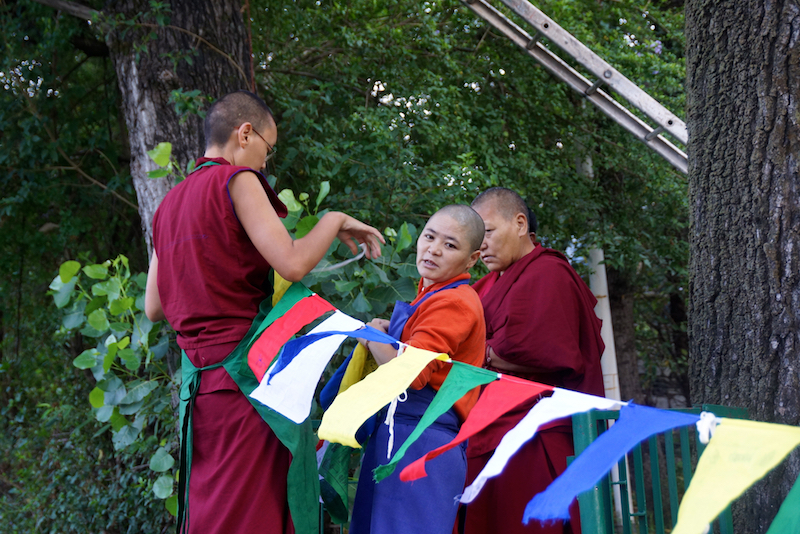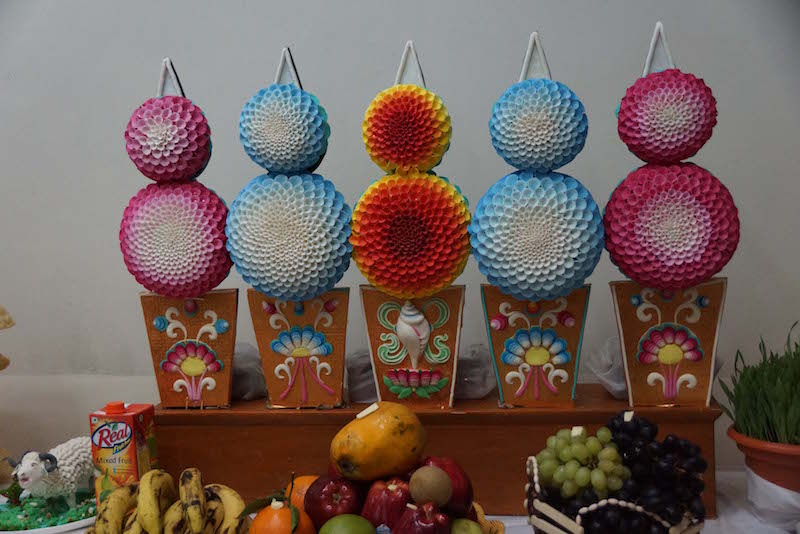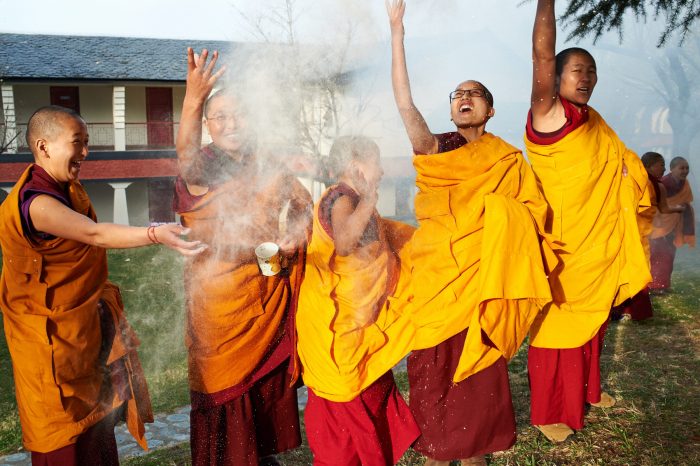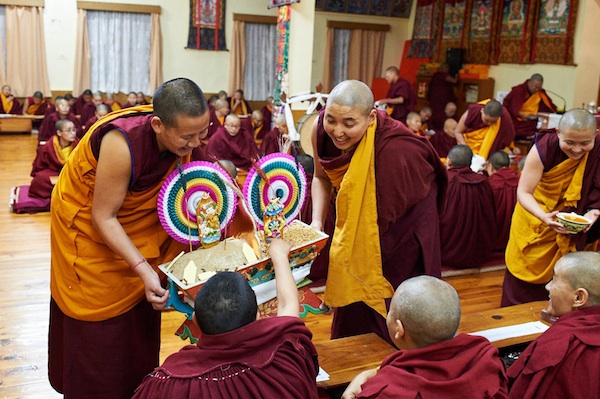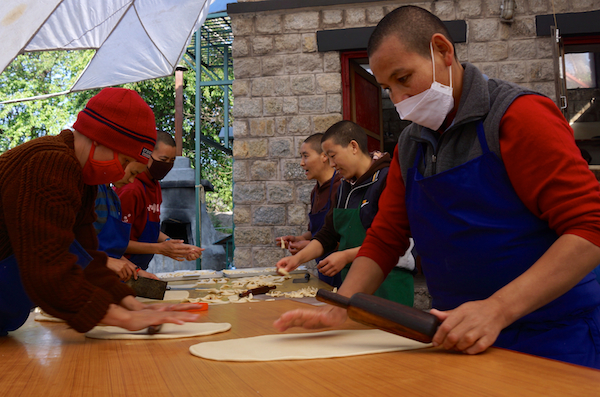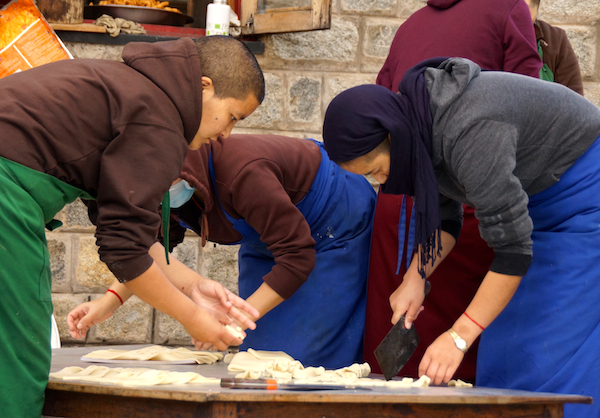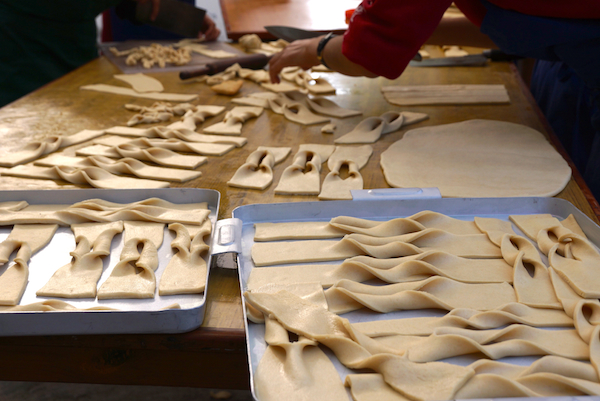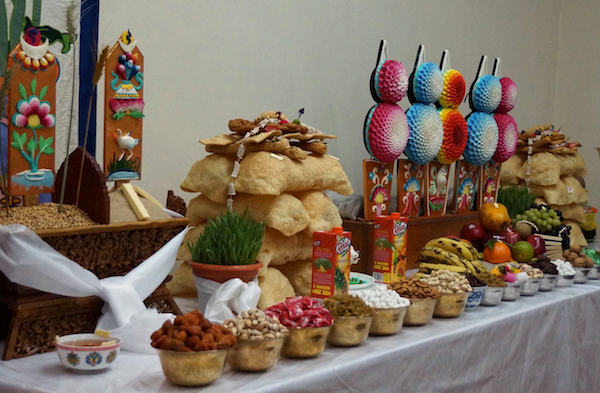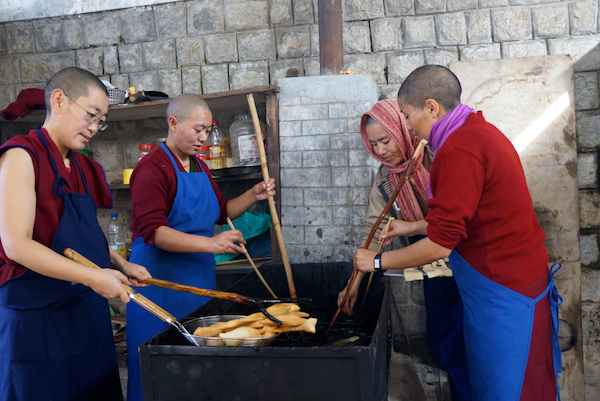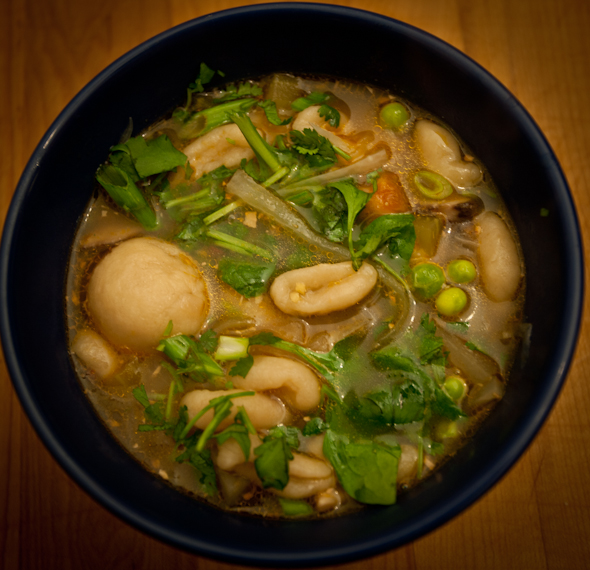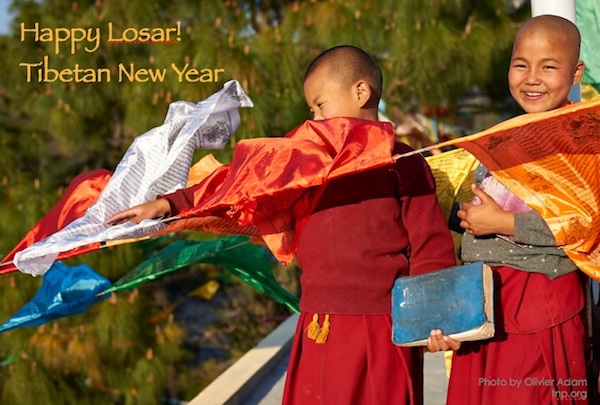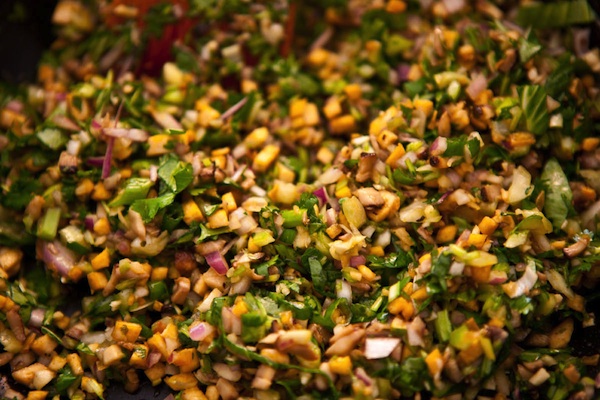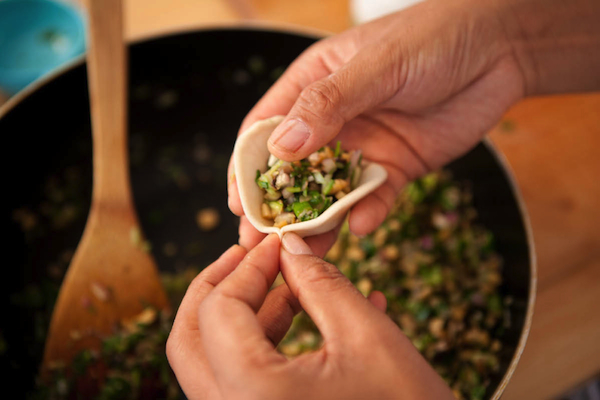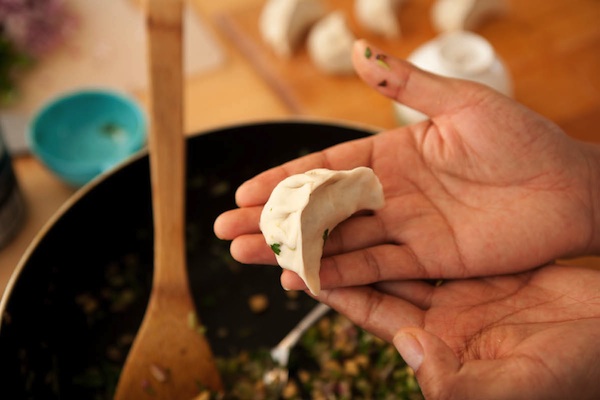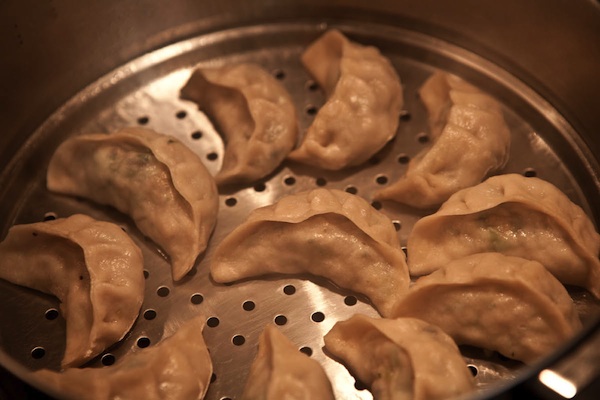Each year, the Tibetan Nuns Project sells a wall calendar through our online store. Our 2020 Tibetan Nuns Project calendar is available for order now.
How the Tibetan Nuns Project Calendar is Created
We started the calendar about 20 years ago as a fundraising and friend-raising tool to help support over 800 Tibetan Buddhist nuns at seven nunneries in northern India.
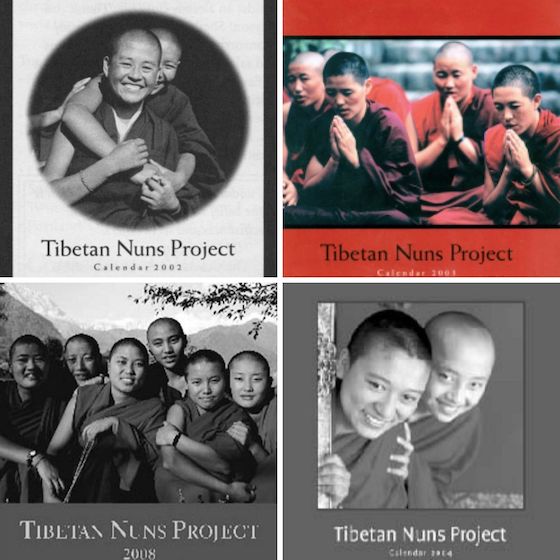
A selection of some of the early Tibetan Nuns Project charity calendars from 2002 to 2008. The Tibetan Nuns Project wall calendar is now full color and uses photos taken by the nuns themselves.
In the past, we used photographs generously provided by volunteer photographers. Recently, we have only used photographs taken by the nuns themselves. These photographs provide an intimate insight into the daily lives and religious and cultural practices of the nuns.
Each summer, the nunneries that we support send a selection of photos for possible inclusion in the next year’s calendar. Once all the photos are gathered together a final selection is made. We try to balance the images, choosing at least one photograph from each nunnery and selecting photographs that are windows into the nuns’ lives.
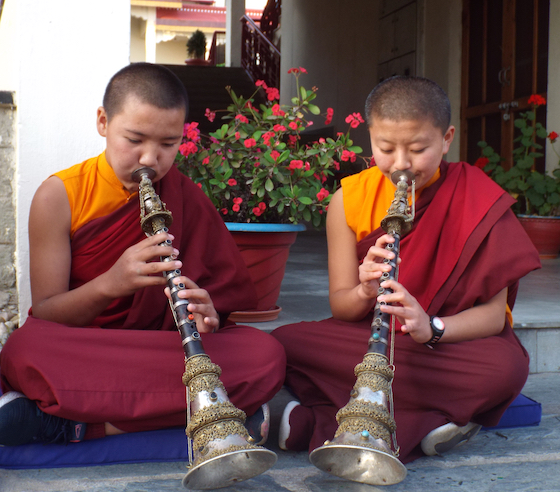
In this photo from the 2020 calendar, two nuns at Shugsep Nunnery and Institute play the gyaling, a traditional Tibetan woodwind instrument. The photo was taken by a nun at Shugsep and is an illustration of how the annual calendar provides an intimate insight into the daily lives and religious and cultural practices of the nuns.
Each photo is captioned and paired with inspirational quotations from renowned Tibetan Buddhist teachers, such as His Holiness the Dalai Lama, and others
“Each summer at our Seattle office, it’s really exciting to open up emails from India and see the photos sent by the nunneries for possible inclusion in the calendar,” says Lisa Farmer, Executive Director of the Tibetan Nuns Project.
“In the past, there were challenges with photo quality. Now, thanks to our Media Equipment Project donors, each of the nunneries has a digital camera and the nuns received training on how to use them. We’re looking forward to sharing more photos with supporters, especially from the remote nunneries that didn’t have this capacity until now,” says Lisa.
The Tibetan Calendar vs. the Gregorian Calendar
The Tibetan Nuns Project calendar also includes the dates of the Tibetan lunar calendar, as well as special ritual days, Tibetan holidays, and the full and new moons.
Each year, as we assemble the selection of photos for the calendar, the astrologers at the Tibetan Medical and Astrological Institute in Dharamsala, India supply us with the dates for the year’s Tibetan Buddhist holidays and holy days.
The Tibetan calendar is thousands of years old and is different from the Gregorian calendar, which is the international standard used almost everywhere in the world for civil purposes.

Here’s another image that will be in the 2020 Tibetan Nuns Project calendar and shows nuns receiving camera training from a volunteer Tibetan photographer. Now all 7 nunneries have cameras thanks to Media Equipment donors.
While the Gregorian calendar is a purely solar calendar, the Tibetan calendar (Tibetan: ལོ་ཐོ, Wylie: lo-tho) is a lunisolar calendar. This means that the Tibetan year is composed of either 12 or 13 lunar months, each beginning and ending with a new moon. A thirteenth month is added every two or three years so that an average Tibetan year is equal to the solar year.
In the traditional Tibetan calendar, each year is associated with an animal, an element, and a number. This year, 2019, is the year of the Earth Pig, 2146, according to the Tibetan calendar. Next year, starting at Tibetan New Year or Losar on February 24, 2020, it will be the year of the Iron Mouse, 2147.
The animals in the Tibetan calendar are somewhat similar to those in the Chinese zodiac and are in the following order: Mouse, Ox, Tiger, Rabbit, Dragon, Snake, Horse, Sheep, Monkey, Bird, Dog, and Boar. The five elements are in this order: Wood, Fire, Earth, Iron, and Water.
 A Unique Charity Calendar
A Unique Charity Calendar
The proceeds from the sale of the Tibetan Nuns Project calendar are used to support over 700 Tibetan Buddhist nuns and seven nunneries in India.
Thank you for buying our 2020 Tibetan Nuns Project calendar and helping the nuns!
You can order your 2020 Calendar here.


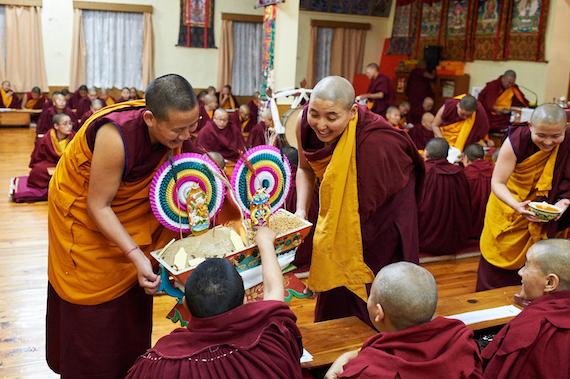

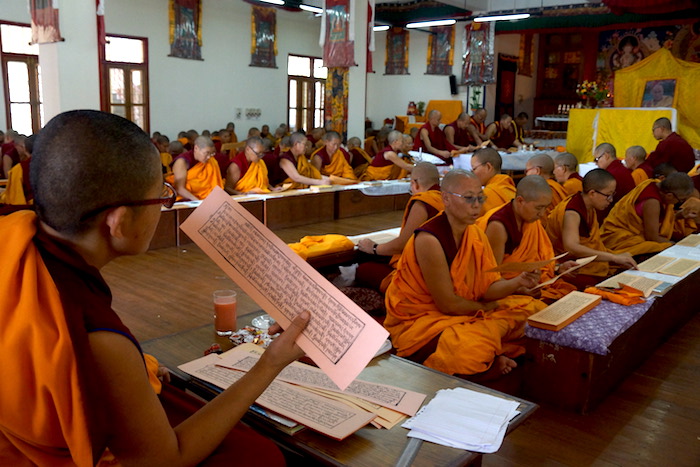
 Around the world, His Holiness the Dalai Lama’s birthday on July 6th will be celebrated with happiness and prayers for his good health and long life. This year His Holiness the Dalai Lama turns 84. The nuns will pray and make special offerings of tsok, khataks (prayer scarves), and sangsol (incense offering) to His Holiness. It’s a day of celebration with special food, such as
Around the world, His Holiness the Dalai Lama’s birthday on July 6th will be celebrated with happiness and prayers for his good health and long life. This year His Holiness the Dalai Lama turns 84. The nuns will pray and make special offerings of tsok, khataks (prayer scarves), and sangsol (incense offering) to His Holiness. It’s a day of celebration with special food, such as 